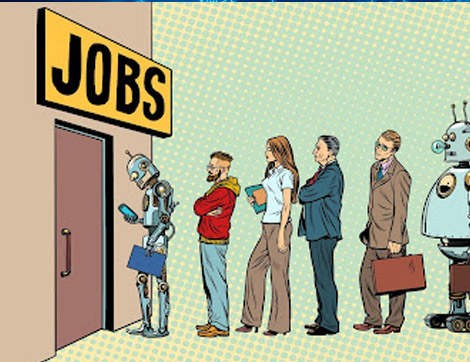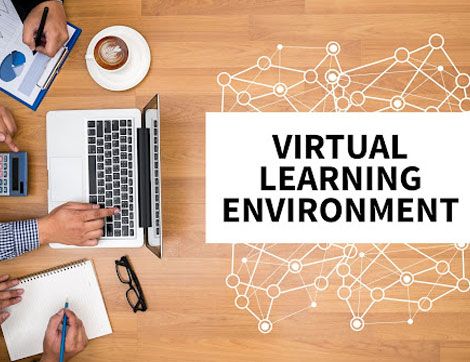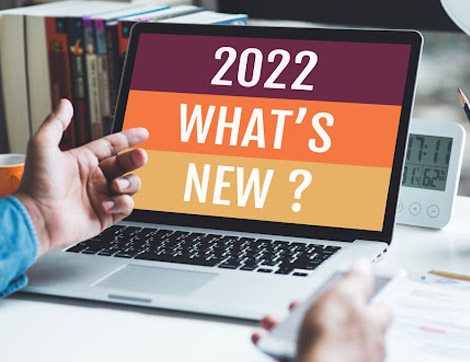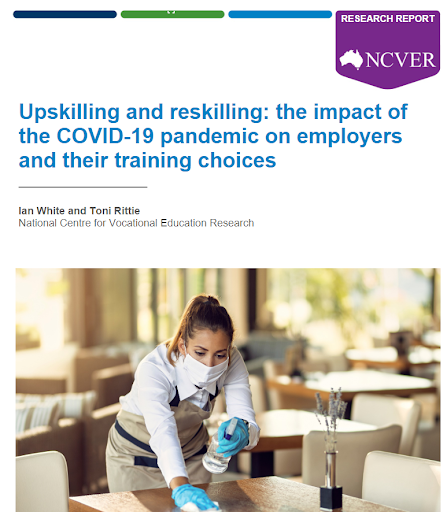According to almost all ASQA reports, getting an assessment right is one of an RTO’s most difficult compliance issues, with a substantial number of RTOs, audited being found to be non-compliant with clause 1.8 (ASQA’s 2017 report showed around 72% RTOs failed audit on assessment resources). This is what we notice as well whenever we have conducted any internal audits through CAQA.
It is a wise decision to get your training and assessment strategies and resources validated by independent industry experts to get honest feedback and an unbiased opinion.
The purpose of the assessment tool
The main purpose of an assessment tool, student assessment, or assessment pack is to ensure that trainers and assessors can effectively establish whether a learner is competent or not yet competent in a training product. There are three ways a trainer/assessor can establish competence:
- Tell me what you can do (Demonstration of knowledge)
- Show me what you can do (Demonstration of skills)
- Make me something (Application of knowledge and skills)
Let’s look into some of the most important aspects in detail now:
Understand how the assessment materials meet the training package requirements
This step necessitates you concentrating on how the assessment materials fit the requirements of the training package. This is the step when you understand what competence in this particular unit of competency will look like.
Focus points include understanding of:
- What is the AQF level where the unit of competency will be used?
- What is the unit descriptor/application of the unit saying about work activities included in the unit of competency?
- What are the prerequisite or corequisite requirements related to the unit of competency?
- What level of skill is required for this unit according to where (which qualification) the unit of competency will be used
- What are the elements, performance criteria, range of conditions, foundation skills, knowledge evidence, performance evidence, assessment conditions
- Read the assessment conditions and foundation skills: What are the conditions under which this work activity should be conducted
- Are there any other specific requirements applicable to this unit of competency?
Before moving on to practical task activities, the learner must first demonstrate that he or she understands the subject through demonstration of knowledge.
KNOWLEDGE – you need to have knowledge before you can perform
Look over the requirements for the training package and have a close look at the knowledge evidence to see if it says once is sufficient. If it does not state that, it implies that you must address each of the knowledge evidence criteria at least twice. We can address the knowledge evidence requirements using a variety of activities such as questions and answers, case studies, report writing, and other knowledge-based assessment methods.
PERFORMANCE – means that you have to do something
Then it’s time to look at performance criteria and performance evidence, and once again, pay attention to whether or not there are instructions on how many times this should be addressed. If this is not the case, each performance criteria and the performance evidence must be addressed in the assessment tasks and activities at least twice, if not more, utilising a variety of assessment methods and activities such as projects, portfolios, practical task activities, workplace tasks and observations and so on.
Focus on the action verbs and action keywords
Focus on all action verbs and action keywords included in the training package when developing your assessment resources. Each and every action verb and keyword must be addressed through the assessment resources.
Bloom’s taxonomy of measurable verbs is a good starting point to understand more about the action verbs.

Ensure if something is plural you have addressed them more than once.
If there is anything mentioned as plural such as strategies, you must ensure the assessment resources have at least two (2) or more strategies mentioned in them.
You must establish if each component of the training package requires evidence in the form of knowledge, skill or product.
Comprehensive mapping to training package requirements
A comprehensive mapping document is required to ensure all training package criteria has been addressed appropriately and comprehensively. Mapping is a cross-referencing activity where each component of the unit of competency is cross-referenced to one or more assessment criteria or questions in the assessment activities and tasks. Mapping is more a content validity process and not a process validity process.
Refer to the following articles for more information
Mapping document of assessment resources – do you need one? https://caqa.com.au/2021/10/04/mapping-document-of-assessment-resources-do-you-need-one/
Focus on evidence collection and assessment methods
Focus on evidence collection and assessment methods after ensuring that the assessment resources meet the training package requirements. The focus points should include:
- What are the assessment methods selected for evidence collection?
- Are these suitable and appropriate for evidence collection?
- What are the other methods that may be used for evidence collection?
- Where and how should evidence be collected?
- What resources are required for evidence collection?
Foundation skills, assessment conditions, performance evidence, performance criteria and knowledge evidence should be taken into consideration when designing the evidence collection and assessment methods.
The evidence collection and assessment methods should change according to the AQF level where the units of competency will be used. For example, for a Certificate II, III level true or false, match the following statements with, multiple-choice questions, fill in the blanks might be appropriate but for Certificate IV and Diploma short answer questions, closed book, time-limited exams, contrast and separate, and other assessment methods could be used. We have included an AQF summary for you to understand how each AQF level requires a different set of requirements.
| AQF Level |
Summary |
Qualifications |
Purpose of this Qualification |
| 1 |
Graduates at this level will have knowledge and skills for initial work,
community involvement
and/or further learning |
Certificate I |
basic functional knowledge and skills to undertake work, further learning and community involvement. |
| 2 |
Graduates at this level will have knowledge and skills for work in a
defined context and/or
further learning |
Certificate II |
qualify individuals to undertake mainly routine work and as a pathway to further learning. |
| 3 |
Graduates at this level will have theoretical and practical knowledge and
skills for work and/or
further learning |
Certificate III |
to qualify individuals who apply a broad range of knowledge and skills in varied contexts to undertake skilled work and as a pathway for further learning. |
| 4 |
Graduates at this level will have theoretical and practical knowledge and
skills for specialised
and/or skilled work
and/or further learning |
Certificate IV |
to qualify individuals who apply a broad range of specialised knowledge and skills in varied contexts to undertake skilled work and as a pathway for further learning. |
| 5 |
Graduates at this level will have specialised knowledge and skills for
skilled/paraprofessional
work and/or further
learning |
Diploma |
to qualify individuals who apply integrated technical and theoretical concepts in a broad range of contexts to undertake advanced skilled or paraprofessional work and as a pathway for further learning. |
| 6 |
Graduates at this level will have broad knowledge and skills for
paraprofessional/highly
skilled work and/or
further learning |
Advanced Diploma Associate Degree |
to qualify individuals who apply specialised knowledge in a range of contexts to undertake advanced skilled or paraprofessional work and as a pathway for further learning. |
| 7 |
Graduates at this level will have broad and coherent knowledge and
skills for professional
work and/or further
learning |
Bachelor Degree |
to qualify individuals who apply a broad and coherent body of knowledge in a range of contexts to undertake professional work and as a pathway for further learning. |
| 8 |
Graduates at this level will have advanced knowledge and skills for
professional highly skilled
work and/or further
learning |
Bachelor Honours Degree Graduate and
Vocational Graduate
Certificate
Graduate and
Vocational Graduate
Diploma |
to qualify individuals who apply a body of knowledge in a specific context or range of contexts to undertake professional or highly skilled work and as a pathway for research and further learning. |
| 9 |
Graduates at this level will have specialised knowledge and skills for
research, and/or
professional practice
and/or further learning |
Masters Degree |
to qualify individuals who apply an advanced body of knowledge in a range of contexts for professional practice and as a pathway for further learning. |
| 10 |
Graduates at this level will have a systematic and critical understanding of
a complex field of
learning and specialised
research skills for the
advancement of learning
and/or for professional
practice |
Doctoral Degree |
to qualify individuals who apply a substantial body of knowledge to research, investigate and develop new knowledge, in one or more fields of investigation, scholarship or professional practice. |
You must look if the assessment methods accurately and properly describe how many questions students must do correctly to be deemed satisfactory in the assessment task or activity and then check mapping to ensure your recommendation does not compromise the integrity of the assessment.
Always remember that each of the evidence collection and assessment methods must flesh out the details related to the assessment activities and tasks such as what, why, where, how, when something must occur.
Check the content for validity and reliability
Ensure all content is complete, error-free, plagiarism and copyright issues free, you also need to ensure that:
- Assessment resources have sufficient and clear information regarding what, when, how, where, why for your assessment template and all assessment tasks and activities.
- Assessment resources have robust benchmarking and/or trainers’ guidance.
- Assessment resources are allowing the trainer/assessor to assess the skills and knowledge of students through different assessment tasks over a period of time to ensure consistency and sufficiency.
- Each and every question and assessment task has very clear guidelines around what is expected from the students in terms of both quantity and quality.
- You have customised the off-the-shelf resources according to your RTO needs and requirements and not using them as-is.
- Your assessment resources are written by industry experts with subject matter experts and are industry-relevant and current.
- Your assessment resources address all requirements of the training packaging rules
- Your assessment resources have detailed and valid performance checklists/observation checklists for assessing and observing the students before, during and after any skill assessment activity or workplace task
- Your trainers and assessors gather sufficient, valid evidence for competency assessment
- Your organisation offers appropriate simulated environments for conducting assessments
- The authenticity of assessment, particularly in distance and online delivery is established and maintained
- The context and conditions of assessment. For example, an assessment tool is developed to cater for a particular language, literacy and numeracy requirements, the learner’s workplace experience or other learner needs that require reasonable adjustment.
- The context of the assessment may also take into account assessments already completed, and the competencies demonstrated in these assessments. By looking at the context, you can consider the conditions under which evidence for assessment must be gathered.
- All activities are conducted adequately using the required:
- equipment or material requirements
- contingencies
- specifications
- physical conditions
- relationships with team members and supervisors
- relationships with clients/customers
- timeframes for completion.
- Assessment methods or tasks are suitable to the requirements of the units of competency and students are assessed on the tasks and activities according to the requirements of the training package.
- The language used is simple English
- The evidence required to make a decision of competency is clearly outlined
- The types of activities and tasks students need to perform are clearly outlined
- The level of performance required for each assessment activity is clearly outlined
- Adequate exposure to workplace conditions, including appropriate simulated environments, is provided
- Sufficient knowledge-based assessment tasks and activities such as written questions and case studies etc.
- Sufficient practical based assessment tasks and activities such as projects, role plays, workplace tasks and observations etc.
- Assessment resources are error-free and free from any grammar, copyright or plagiarism issues
Assessment resources meet principles of assessments and rules of evidence
When constructing or reviewing the assessment tools, RTO compliance experts such as compliance managers, RTO management and trainers and assessors must ensure that the principles of assessment and rules of evidence are strictly followed.
The regulatory requirements specify that this is not only good practice but also a requirement for RTO registration. Validity, reliability, flexibility, and fairness are all requirements of the assessment evaluation process.
Validity
The validity of an assessment outcome refers to the extent to which the interpretation and use of the outcome can be supported by evidence. When the assessment methods and assessment materials used reflect all the training package requirements such as elements, performance criteria, etc. the assessment is considered valid. The assessment outcome is also considered valid when the evidence gathered fully supports the assessment outcome.
Reliability
The degree to which the assessment outcomes are consistent and accurate is referred to as reliability; that is, the extent to which the assessment will produce similar outcomes for students with equal competence at different times or places, regardless of the trainer who is conducting the assessment.
Flexibility
When students have the chance to negotiate specific components or aspects of their assessment (for example, timing) with their trainers and assessors, this is referred to as flexibility. All students should be thoroughly informed (for example, through an assessment plan) of the purpose of the assessment, the assessment criteria, the methods and tools that will be used, as well as the context and timing of the assessment, prior to taking part in it.
Fairness
A fair assessment does not favour or disadvantage any particular learners or groups of students in a discriminatory manner. Depending on the situation, this may imply that assessment procedures be tailored to specific learners (such as those with disabilities or those from diverse cultural backgrounds) in order to guarantee that they are not disadvantaged as a result of their circumstances. An evaluation should not set too high demands on students, as this may hinder them from demonstrating competency in the subject matter (for example, an assessment should not demand a higher level of English language or literacy than that required to perform to the workplace standard outlined in the competencies being assessed).
Evidence is governed by a set of rules.
A well-designed assessment tool will aid in ensuring that the evidence gathered is of the following types:
- Valid – there is a clear relationship between the evidence criteria of the unit of competency and the evidence on the basis of which the assessment judgement is made;
- Sufficient – the performance criteria and evidence guide is addressed; competence is demonstrated over a period of time; all dimensions of competency are addressed; competence is demonstrated in a variety of settings;
- Current – the evidence reveals that the student possesses current knowledge and skills, and
- Authentic – the evidence may be confirmed to show that it is the student’s own original effort.
In conjunction with industry, assessment evaluation strategies, methodologies and tools should be developed, and they should be evaluated on an appropriate sample of students before being implemented.
Easy to contextualise to your learner cohorts
Contextualising assessments and learner materials are one of the most thought-provoking tasks that RTOs face. Many RTOs are deemed non-compliant due to their contextualisation methods.
Regardless of whether you have developed the assessment resources in-house or you have purchased them as off-the-shelf resources, you must customise and contextualise each training product.
The customisation and contextualisation should occur in terms of
- training context,
- learner characteristics,
- delivery modes,
- cultural context,
- technology requirements,
- AQF level,
- intent if the unit of competency is not addressed appropriately,
- formatting,
- grammar,
- Your RTO’s templates and style guides
For more information, please read the following articles
https://caqa.com.au/2021/10/04/contextualisation-why-you-must-contextualise-the-training-and-assessment-resources/
https://caqa.com.au/2018/06/08/contextualising-assessment-resources-part-2/
How to make a reasonable adjustment in summative assessments
https://caqa.com.au/2021/07/14/how-to-make-reasonable-adjustment-in-summative-assessments/
Easy to modify to different delivery modes
Assessment resources should be adaptable to a variety of delivery modes, including online, offline, distance learning, workplace, and blended learning.
Clear guidance to the assessor
Assessment resources should provide clear instructions to assessors in terms of what they should look for.
- what was expected from the learners
- what they (trainers and assessors) should observe
- have clear assessment (evidence-gathering) methods based on training package requirements
- have clear assessment (evidence-gathering) tools
- how they (trainers and assessors) should assess
- have clear benchmarks and standards against which a student’s work is assessed
- have clear evidence requirements to assess sufficiency and competency
- have clear guidelines related to when assessments should occur and how they should occur
- who should collect the evidence and when?
- When determining who can collect evidence, the guidelines for training package assessment may be of use to you. It is critical that the instrument and instructions for your assessment tools clearly state what is expected of the students, the trainer/assessor, workplace supervisor or a third-party evidence gatherer. It is also critical that the instrument and instructions for your assessment tools provide a clear structure for the evidence gatherers to follow.
- where they (trainers and assessors) should record
- Focus on the requirements of the training package – is there any specific conditions, requirements and guidelines?
- If workplace assessment is not possible or suitable, your alternative is to choose settings and procedures that allow students to demonstrate their competence to the level of performance indicated.
- In a simulation, students should complete or deal with a task, activity, or problem in an off-the-job situation that is designed to mirror the workplace environment.
- how they (trainers and assessors) should record
- What are the RTO requirements and documentation?
- who they (trainers and assessors) should report
- Where do the assessors and trainers report the outcome of the assessment?
- What is the procedure?
- How students are informed about the assessment outcome?
Clear instructions to the learner
All assessment materials should provide very clear instructions to the learners in terms of:
- What
- When
- Where
- How
- Why
- Reasonable adjustments required
Observation checklists and benchmarking
All assessment resources should have comprehensive observation checklists and benchmarking to ensure
- Learners know what is expected of them
- Assessors know the scope of assessment in terms of what they should observe and assess, resources required and what should be considered when assessing
- Clear guidelines and information related to how to use the observation checklists
All equipment, resources and facilities are available to conduct the assessment
Assessment conditions should be followed strictly and the training organisation should ensure that all equipment, resources and facilities are available to conduct the assessment.
Language, Literacy and numeracy requirements of the unit
The assessment tool must reflect the language, literacy and numeracy requirements related to the work task and work activities required to be assessed. Your focus points should include:
- Reading
- Writing
- Numeracy
- Oral communication
- Learning
Ensure students are ready for the summative assessment
You must ensure that all students are ready for the summative assessment before you assess them.
For more information, please refer to
Formative vs Summative Assessment: A Comparison https://caqa.com.au/2022/01/31/formative-vs-summative-assessment-a-comparison/
Conduct pre and post validation checks
You must pre and post validate all assessment resources before and after you use them for your learners.
For more information, please refer to:
Different phases of assessment and learner validation processes (Part 1), Click here.
Different phases of assessment and learner validation processes (Part 2), Click here.
Different phases of assessment and learner validation processes (Part 3 of 4), Click here.
Different phases of assessment and learner validation processes (Part 4 of 4), Click here.
fact sheet, Click here.
Having a license of purchase
Training organisations should double-check that they have an authorised copy of the training and assessment resources from the publisher of the resource before using them for training purposes.
In a number of audits, the regulatory body has requested proof of purchase because a number of stakeholders are aware that there are some offenders in the sector who do not purchase the actual copies of the resources, resell when they do not have authority, or obtain materials in other illegal ways.
For more information, please click here.
How to protect the copyright of your training and assessment materials Margaret Ryan (lawyer and trade marks attorney), for more information click here.
References:
Guide – developing assessment tools https://www.asqa.gov.au/resources/guides/guide-developing-assessment-tools

























